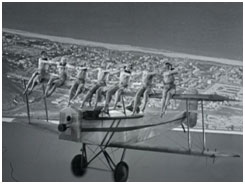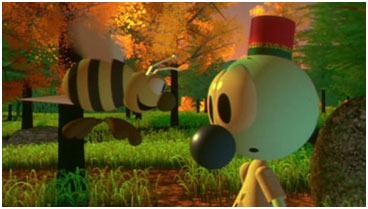It was a revolution when the world’s first film was released. It was amazing to see a moving sequence on a screen. It started with a few frames proceeded by a few seconds, then minutes and now we enjoy hours worth of content on the small & big screen alike.
Change is the law of nature and this applies to the film industry as well. Earlier movies were mute, monochromatic films. Later, we had the ‘talkies’ with the introduction of sound. After a few years, coloured films were released to enhance the entertainment value. But there is one more factor which has revolutionized the way we look at films and that is Special Effects /Visual Effects.
Visual effects (VFX) in today’s movies not only create breath-taking scenes, but also bring down production costs since many scenes/shots are produced with VFX.
It was not an easy task earlier to create Special Effects shots. But there were some creative visionaries who made this successful.
The first effort was by Buster Keaton in the year 1921 for the film The Playhouse in which he created nine replicas of his own in a single frame performing nine different roles at the same time.

The effort of being creative continued and the concept of travelling matte came into existence with the film Flying Down to Rio in 1933.This film involved some sky shots for which a sky sequence was projected on a screen and actors performed in front of that screen, which was again captured by another camera. People may not consider it a great technical achievement today, but at that time it was the best creative expression ever.

Also, now-a-days, a compositor’s life is easier, since they get a footage shot in front of green or blue screen called chroma, import the footage, apply a filter and the job is done. But it was not simple for Larry Butler who used the chroma key process in 1943 for The Thief of Baghdad.

The revolution still continues to give us some good films with mind blowing VFX which we enjoy. Let’s have a glance at some of the memorable VFX applied in films for the first time:
Star Wars (1977) : First 3D wireframe graphics for the trench run briefing sequence

Superman (1978) : First CG title sequence

Star trek 2 (1982) : First use of fractal generated landscape

The adventure of Andre and Wally B (1984) : First CG animation with motion blur effect and squash and stretch motion.

Flight of The Navigator (1986) : First Use Of reflection mapping in film

Luxo Jr (1986) : First shadow in CG developed in Renderman.

Terminator 2(1991) : First realistic human movement on a CG character.

Jurassic Park (1993) : First Photorealistic CG creatures.

Titanic (1997) : Elements rendered under LINUX.

The Matrix (1999) : First use of Bullet Time effect integrated with CG elements.

LOTR (2001) : First use of Artificial Intelligence using MASSIVE software.
Avatar (2009) : First full length film with Performance Capture and first use of Virtual Production Pipeline.

Today, creating Visual Effects is not a one man job, but generally involves a team with people specializing in programming, engineering, Arts, etc. With the right combination of training, creativity & technical skills, you too could make a career as a VFX professional and create special effects for films, TV,media etc.
The revolution which started in 1921 still continues and will continue forever. Let’s wait and watch for the next BIG THING!


